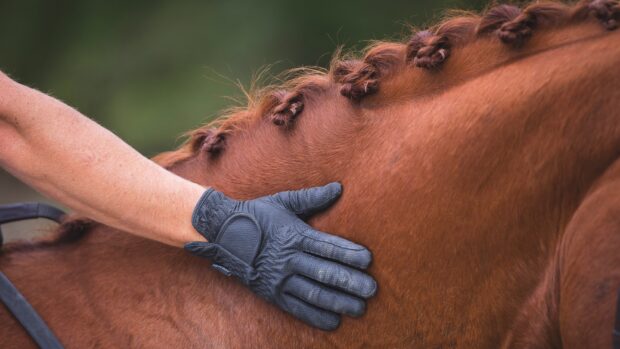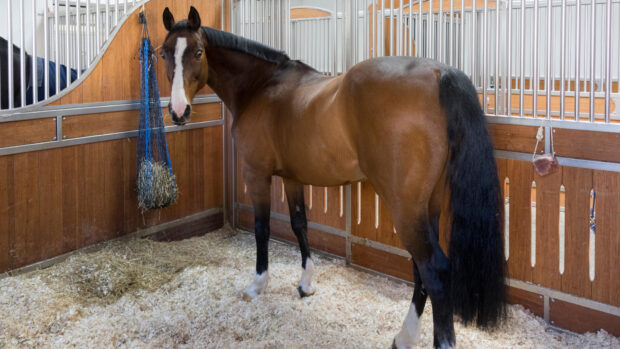Medieval warhorses previously thought to be around 17hh tall were in reality no more than “pony-sized”, new research has suggested.
Researchers “searching for the truth about the great horse” found warhorses were not always bred for size, but for success in a wide range of different functions, including tournaments and long-distance raiding campaigns.
Historians and archaeologists analysed the largest ever dataset of horse bones dating between 300 AD and 1650, at 171 separate archaeological sites. The study, published in the International Journal of Osteoarchaeology, showed that the breeding and training of warhorses was influenced by a combination of biological and cultural factors, plus behavioural characteristics of the horse.
A spokesman for the project said depictions of medieval warhorses in films often portray “massive mounts”, some 17hh to 18hh.
“Medieval horses are often depicted as massive and powerful beasts, but in reality were no more than pony-sized by modern standards. Horses during the period were often below 14.2hh, but size was clearly not everything, as historical records indicate huge sums were spent on developing and maintaining networks for the breeding, training and keeping of horses used in combat,” he said.
“The evidence suggests that horses of 16 and even 15 hands were very rare; even at the height of the royal stud network during the 13th and 14th centuries, animals of this size would have been seen as very large by medieval people.”
Researcher Helene Benkert said neither size nor limb bone robusticity alone is enough to confidently identify warhorses in the archaeological record.
“Historic records don’t give the specific criteria which defined a warhorse. It is much more likely that throughout the medieval period, at different times, different conformations of horses were desirable in response to changing battlefield tactics and cultural preferences,” she said.
The spokesman said the tallest Norman horse recorded was found at Trowbridge Castle, Wiltshire, and estimated to be around 15hh. The high medieval period (1200-1350 AD) saw the first emergence of horses of around 16hh, although it was not until the post-medieval period (1500-1650 AD) that the average height of horses became significantly larger, approaching the sizes of modern warmblood and draft horses.
“High medieval destriers [warhorses] may have been relatively large for the time period, but were clearly still much smaller than we might expect for equivalent functions today,” said Alan Outram, one of the researchers.“Selection and breeding practices in the royal studs may have focused as much on temperament and the correct physical characteristics for warfare as they did on raw size.”
Oliver Creighton, the principal investigator for the project, added: “The warhorse is central to our understanding of medieval English society and culture as both a symbol of status closely associated with the development of aristocratic identity and as a weapon of war famed for its mobility and shock value, changing the face of battle.“
The research, funded by the Arts and Humanities Research Council. was carried out by Carly Ameen, Helene Benkert, Malene Lauritsen, Karina Rapp, Tess Townend, Laura May Jones, Camille Mai Lan Vo Van Qui, Robert Webley, Naomi Sykes, Oliver Creighton and Alan Outram from the University of Exeter, Tamsyn Fraser from the University of Sheffield, Rebecca Gordon, Matilda Holmes and Will Johnson from the University of Leicester, Mark Maltby from Bournemouth University, Gary Paul Baker and Robert Liddiard from the University of East Anglia.
You might also be interested in:

Ancient horse still wearing harness unearthed at Pompeii
Archaeologists are hailing the find as an ‘exceptional discovery’

2,500-year-old horses put housing development on hold
Experts have dubbed the discovery of the Iron Age horses and chariot as "highly unusual"

Subscribe to Horse & Hound magazine today – and enjoy unlimited website access all year round
Horse & Hound magazine, out every Thursday, is packed with all the latest news and reports, as well as interviews, specials, nostalgia, vet and training advice. Find how you can enjoy the magazine delivered to your door every week, plus options to upgrade your subscription to access our online service that brings you breaking news and reports as well as other benefits.




